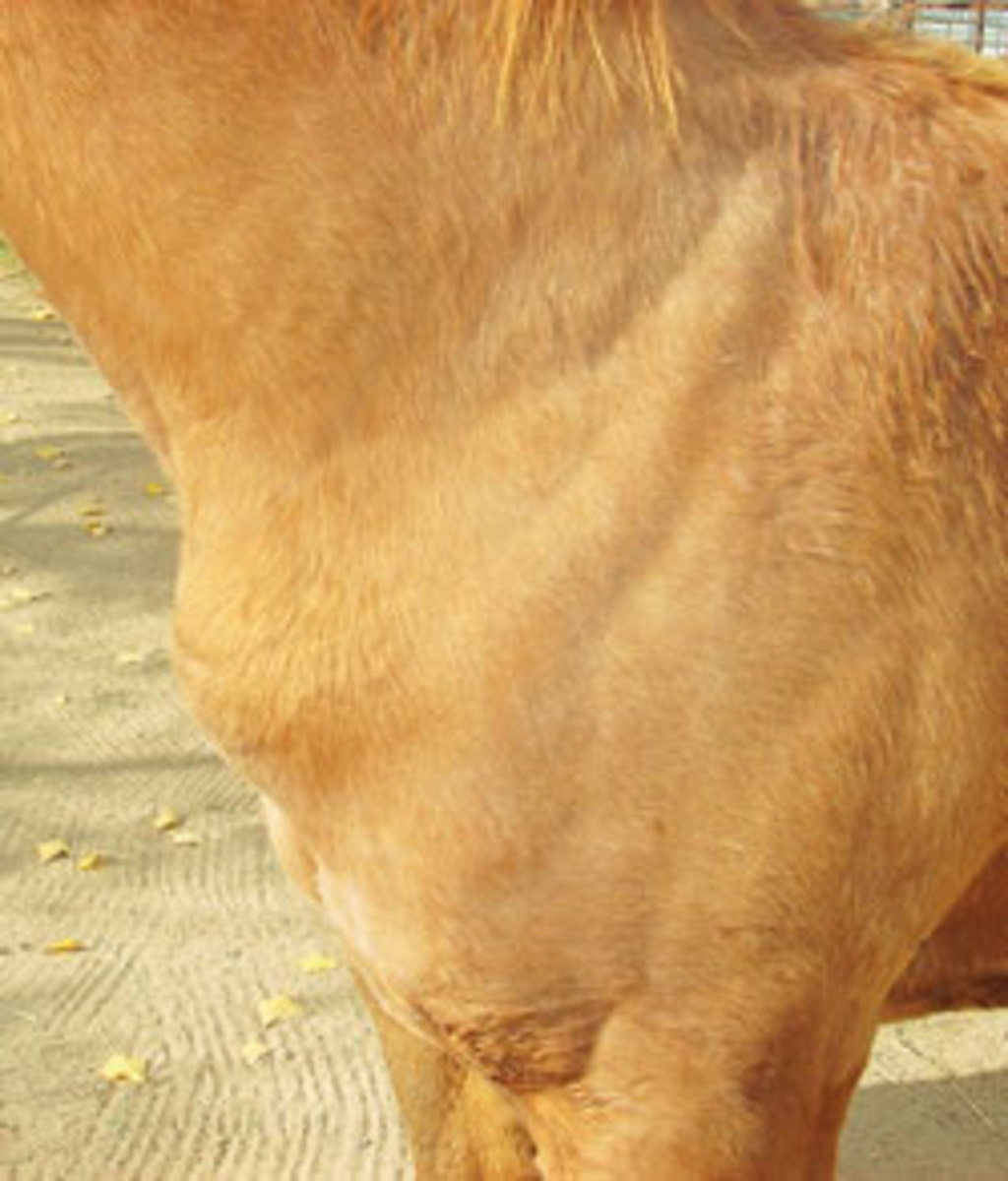
“Pigeon Fever,” (AKA dry-land distemper) is a colloquial term used to define a condition affecting horses. The term came about because the typical location of the lesion, which starts out as a deep abscess, is in the pectoral area. However, these abscesses can occur on any part of a horse.
The abscesses are caused by a bacteria, corynebacterium pseudotuberculosis, which can be found in the environment. The bacteria are thought to gain entrance into the body from fly wounds in the area of the navel. Flies are definitely a vector for spreading this infection in my opinion. Most outbreaks in my area (California’s Central Coast) occur in late summer and fall.
The organism settles in a local lymph node in the lymphatic drainage chain of the underside of the belly. That is why most abscesses are seen in the chest or back in the area of the mammary gland or scrotum, depending on gender. However, I see lesions of this disease on all parts of the horse, which may imply flies contaminating any small break in the skin.
This particular bacteria infects cells, which are filtered out in regional lymph nodes and causes a reaction by the body to wall off the infection. There’s good news and bad news about that scenario. The good news is the infection is walled off, so it stays localized. The bad news is that it’s very difficult for antibiotics to penetrate to the infection and cure it.
So the typical treatment is to wait until the abscess matures, breaks and drains. One can apply hot compresses to try and speed up the process, but I would warn you that some horses resent any manipulation of these early abscesses, because they are literally “sore as a boil.”

Giving antibiotics in the early stages of these abscesses is usually counterproductive. The antibiotics may look to be helping by reducing some of the swelling, but you don’t usually kill the nidus of the infection, and the abscess will flare up once antibiotics are stopped. Once the abscess breaks and drains, it should be flushed well and treated with a topical wound agent. Fly repellants are indicated to keep down the fly contamination and threat of spreading the disease.
These are atypical infections with this disease that can be more threatening because of
location. Structures such as tendon sheaths, walls of lymphatic channels or internal organs are examples. In these cases, one needs intensive long-term antibiotics under supervision by your veterinarian. Horses having had this infection seem relatively immune to it for a few years. While there is no vaccine currently available, to prevent this infection, fly control can be helpful in minimizing its incidence.










